Table of Contents
A hermit’s crabs shell is necessary for its survival, so there is genuine cause for concern if yours has left its home. A hermit crab’s shell not only provides protection, but it also prevents it from drying out, or desiccating as it is known. There are a few reasons a hermit crab might leave the protection of its home, and not all are cause for concern. As these creatures grow, they will leave shells that become too tight and look for a larger place to dwell. Nevertheless, sometimes a hermit crab might leave its shell because it is under stress or ill.
Why Has Your Crab Left Its Shell?
As mentioned above, a hermit crab may leave a shell that is too big or too small to look for a more suitable home. As hermit crabs tend to live in colonies, most people that keep them as pets will have more than one crab in their tanks. However, this can sometimes result in one crab deciding to take over the shell of another. When two or more hermit crabs are vying for the same home, it can result in shell fights.
tend to live in colonies, most people that keep them as pets will have more than one crab in their tanks. However, this can sometimes result in one crab deciding to take over the shell of another. When two or more hermit crabs are vying for the same home, it can result in shell fights.
Unfortunately, shell fights can result in one crab being seriously harmed or even killed as these creatures are fiercely protective of their shells. It is necessary, therefore, to have a variety of shells in the tank so that if one shell is stolen, the evicted crab will have somewhere else to go. This can go a long way to reducing aggressive fights between two crabs.
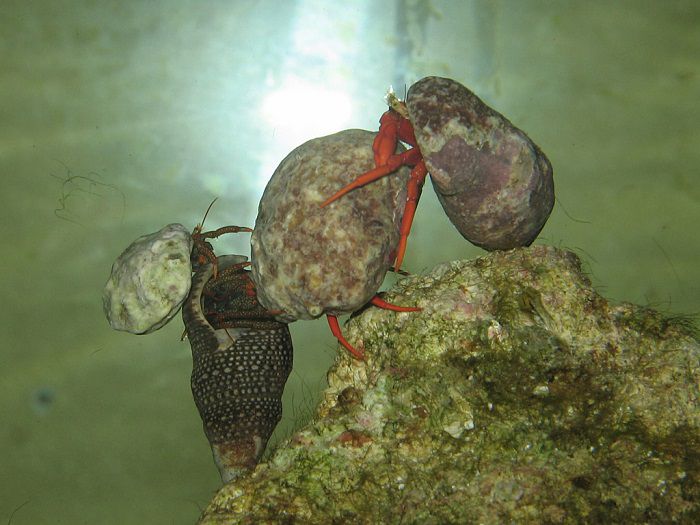
Four Hermit Crabs 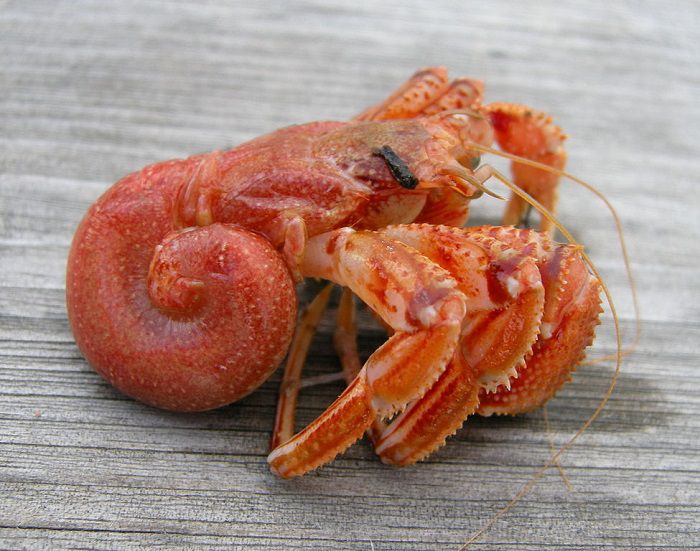
Pagurus bernhardus Outside Shell 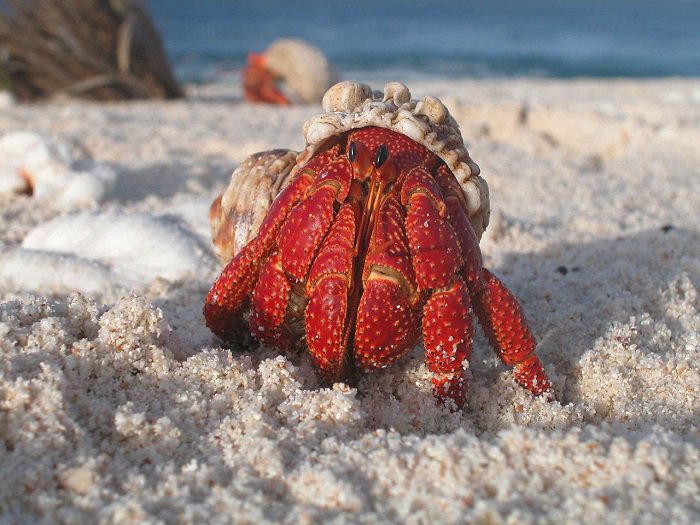
A Hermit Crab Emerging From Shell
Supplying a broad selection of shells for your crabs is also good crab management as it allows the creatures to move to a larger shell as they grow. Without options for a new shell, crabs can be left vulnerable to attacks from others in the tank. They can also become lethargic as they begin to dry out.
Before a hermit crab molts, it will typically display certain signs; for example, eating excessive amounts of food and then not eating anything at all . It may also spend more time near a water source or try to climb the glass walls of the tank. Prior to molting, hermit crabs could also become quite lethargic, almost lifeless in appearance and it is not uncommon for an inexperienced owner to believe their crab has died. The most important thing to do at this stage is – nothing. Disturbing a molting hermit crab can have devastating repercussions.
. It may also spend more time near a water source or try to climb the glass walls of the tank. Prior to molting, hermit crabs could also become quite lethargic, almost lifeless in appearance and it is not uncommon for an inexperienced owner to believe their crab has died. The most important thing to do at this stage is – nothing. Disturbing a molting hermit crab can have devastating repercussions.
What if Your Crab is Not Molting?
If molting is not the reason for shell evacuation, you will need to try to determine the cause. In addition to molting and shell fight, there are other reasons your crab may not want to be in its home. Sadly, the physical stress that hermit crabs endure as they are captured can leave them in a very bad way. It could be that your new pet has experienced a lot of stress from the time it was captured to the time it has arrived in your home and, unfortunately, there is not much you can do about it. If your hermit crab has suffered a particularly stressful time, it could leave its shell in order to die.
Another reason for a crab leaving its shell is that there is something in there that is irritating it. It could be that your pet crab has taken food into its shell that is now causing an irritation to its soft abdomen. If it is not food, it may be something else, such as sand or another foreign body. You can try to clean the shell out with dechlorinated water or even boil it to try to dislodge whatever is causing the irritation.
You will need to monitor the temperature in your crabs’ tank to ensure it is correct because if it is too high then a crab might need to leave its shell to cool down. The tank should have a temperature gradient, with the warm end between 80F and 82F and the cooler end between 72F and 75F. Any temperature above 85F will be uncomfortable for your crabs. Humidity is also important and should be monitored to ensure your crabs’ comfort. The correct level is somewhere between 70 and 80 percent. You can purchase a thermometer and humidity gauge online or at your local pet store. Amazon has a great selection if you’re interested. Click here to take a look (opens in a new tab).
(opens in a new tab).
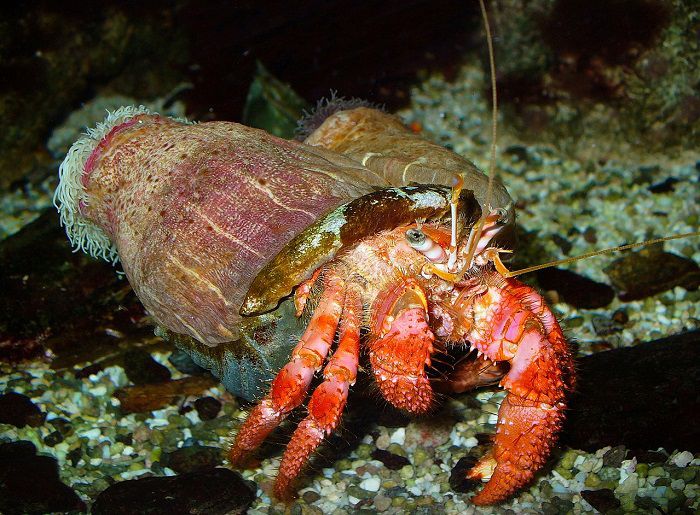
Dardanus calidus 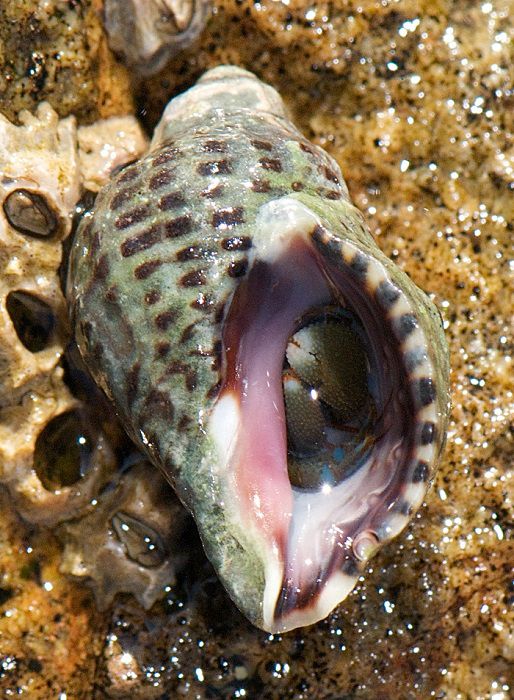
Hermit Crab Retracted Into a Shell
What Can You Do If Your Crab Leaves its Shell?
A crab that is not in its shell will immediately be vulnerable and so will require some form of protection. If your crab is molting, you should remove it to an isolation tank or place a plastic barrier around it. You can use a 2-litre soda bottle that has been cut in half. Make sure the lid is off the bottle (for ventilation) and place it lid side up over the molting crab. This will protect it from attacks from other crabs while allowing it to complete the molting process in peace. Remember that it can take a month or more for your crab to fully molt, so ensure that it can access food and water during this time.
If your crab is not molting, you could try to coax it back into its shell. As mentioned above, try cleaning out its shell in dechlorinated water to ensure that it is not a foreign body causing irritation. If your crab is still not keen to return to its shell, try placing it into a tank or other container with a number of shell options. Place some food in this container as well and keep the container dark by placing a washcloth or other breathable material on top. Oftentimes, your crab will seek out a new home if it has been left in peace and quiet for a while. Make sure that you maintain the correct humidity and temperature while you wait it out. You will need to be patient as there is very little else you can do at this stage.
Photo Credits:
- Featured Image (Hermit Crabs Fighting Over a Shell): Brocken Inaglory
 – CC BY 3.0
– CC BY 3.0
- Pagurus bernhardus Outside Shell: Arnstein Rønning
 – CC BY 3.0
– CC BY 3.0
- Four Hermit Crabs: Drcbc – CC BY 3.0

- A Hermit Crab Emerging From Shell: U.S. Fish and Wildlife Service – public domain
- Dardanus calidus: H. Zell
 – CC BY 3.0
– CC BY 3.0
- Hermit Crab Retracted Into a Shell: Jerry Kirkhart
 – CC BY 2.0
– CC BY 2.0

